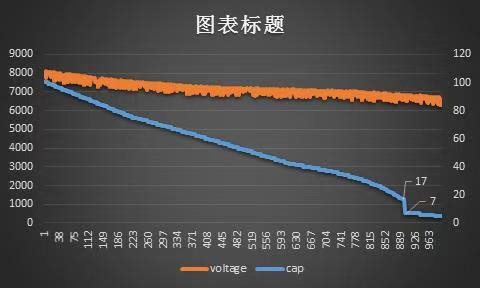Other Parts Discussed in Thread: GPCCEDV, BQ78350-R1, BQ78350
Hi, my customer is using BQ4050 for 2 series battery pack gauging, the capacity jumps from 17% to 7%.
The load doesn't increase or decrease apparently, shown below:
what may cause such jump?
what information we need to provide to find the cause of this jump?



